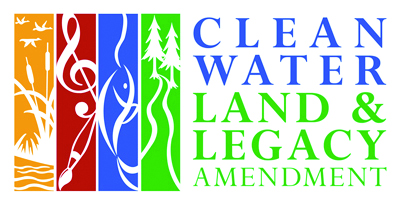The MDA developed the Central Sands Private Well Network in 2011 because of concerns about high nitrate levels in private drinking water wells. Drinking water high in nitrate can cause serious health effects in infants. The state’s Health Risk Limit for nitrate-nitrogen is 10 mg/L.
The Central Sands region has soils that may be vulnerable to groundwater contamination. The long-term goal of the network is to determine nitrate trends in the region. To the greatest extent possible, the same households have been tested since 2011.
Nitrate levels appear to be unchanged since the first year of testing in 2011, no significant decrease or increase. Efforts are made to test the same households each year, but changes do occur. The largest number of wells sampled occurred in 2011.
View current and past result summaries.
An overview:
- All counties in the Central Sands region have been invited to participate in a county-wide private well network.
- Nitrate analysis of 1,555 private wells was completed.
- A subset of participating homeowners (555) will be used to establish a long-term monitoring network.
- Goal of Phase 1: Determine current nitrate concentrations in private wells throughout the Central Sands region of Minnesota.
- Goal of Phase 2: Determine areas of concern and develop a long-term nitrate trend monitoring network.
- A monitoring network will provide a better understanding of nitrate trends in the region and be used to educate private well owners about the quality of their drinking water. This project will help answer the question: Are nitrate concentrations in private drinking water wells increasing, decreasing or staying the same?
Counties Located in the Central Sands Region
Becker, Benton, Cass, Crow Lake, Douglas, Hubbard, Kandiyohi, Morrison, Otter Tail, Pope, Sherburne, Stearns, Todd, Wadena
Private Well Monitoring
The monitoring network is distributed across 14 counties. Selection of individual wells was random, and results from this program can be used to make conclusions about nitrate trends in drinking water across the region.
When a well owner agreed to participate, they filled out a survey about their well (construction type, well depth, age, etc) and returned it. Each participant received a sample kit from a certified lab with instructions on how to take the sample and where to send it for analysis.
Read the 2011 Summary Report (PDF) to learn more!
- A total of 1,555 well owners returned their well survey and water samples for analysis.
- Over 88.6% of the wells sampled had nitrate concentrations less than 3 mg/L, 6.8% of the wells ranged from 3-10 mg/L of nitrate and 4.6%were greater than the drinking water standard of 10 mg/L.
- Nitrate concentrations varied widely over short distances and there was significant local variability in nitrate concentrations.
- Nitrate concentrations varied between counties. Morrison County had the highest percentage of wells (10.5%) with nitrate concentrations over 10 mg/L. Benton and Wadena County both had approximately 8% of wells over 10 mg/L. Cass, Crow Wing, and Douglas counties did not have any results above 10 mg/L.
- Shallow wells (0-50 ft) comprise 46% of the results over 10 mg/L, while wells that are deeper (101-300 ft) only make up 7 %.
- As nitrate concentrations increase the proportion of wells that are greater than 50 years old also increases from 7% to 26%.
Why is this program focused on Nitrates?
Nitrate is a water soluble molecule that is made up of nitrogen and oxygen. It is naturally occurring in the environment; however at elevated levels it can have negative effects on human health. According to a 2007 Minnesota Pollution Control report, nitrate is one of most common contaminants in Minnesota's groundwater, and in some areas of the state a significant number of wells have high nitrate levels (Minnesota's Ground Water Condition: A Statewide View, MPCA 2007). The U.S. Environmental Protection Agency (USEPA) has established a drinking water Maximum Contaminant Level (MCL) of 10 mg/L for nitrate-nitrogen (U.S. EPA, 2009).
Although nitrate occurs naturally, it can also originate from man-made sources such as fertilizer, animal manure and human waste.
Regions of Minnesota most vulnerable to nitrate contamination are central and southeastern Minnesota. Central Minnesota counties are vulnerable because of widespread sandy soil and regions of southeast Minnesota are vulnerable because of shallow bedrock, sinkholes and underground caves (referred to as karst geology), which lead to exchanges between surface and ground water resources.
Results
All of the result summaries and trend reports are located in the Minnesota Digital Water Research Library. Links to the most recent documents are listed below.
Older reports can also be found in the Minnesota Digital Water Research Library. Search for "Central Sands Private Well Network".
Result Summaries
- Central Sands Private Well Network for Nitrate: 2024 Results
- Central Sands Private Well Network for Nitrate: 2023 Results
- Central Sands Private Well Network for Nitrate: 2022 Results
Nitrate Results and Trends
The nitrate testing results from this network of private wells is used in combination with other networks to determine the trend of nitrate levels in regional groundwater over time.
 County Partners: Becker, Benton, Cass, Crow Wing, Douglas, Hubbard, Kandiyohi, Morrison, Otter Tail, Pope, Sherburne, Stearns, Todd, Wadena
County Partners: Becker, Benton, Cass, Crow Wing, Douglas, Hubbard, Kandiyohi, Morrison, Otter Tail, Pope, Sherburne, Stearns, Todd, Wadena*Wadena County Soil and Water Conservation District is the lead local project coordinator.

